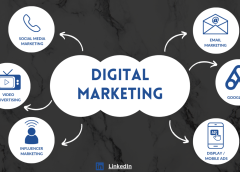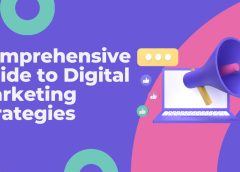In today’s digital age, where consumers are constantly bombarded with information and choices, digital marketing has become an indispensable tool for businesses to reach their target audience effectively. However, amidst the vast opportunities that digital marketing offers, there are also numerous challenges that marketers face. In this article, we’ll explore how to identify unsuccessful campaigns, the most pressing challenges for digital marketers today, and the benefits of collaborative digital marketing campaigns.
How do you know when a campaign is not successful?
Measuring the success of a digital marketing campaign is crucial for optimizing strategies and achieving desired outcomes. Several key indicators can signal when a campaign is not performing as expected:
- Low Conversion Rates: If the campaign fails to generate the desired actions from the audience, such as clicks, leads, or sales, it may indicate ineffective targeting, messaging, or offer.
- High Bounce Rates: A high bounce rate suggests that visitors are not engaging with the content or finding value in it. This could be due to irrelevant content, slow loading times, or poor user experience.
- Declining ROI: When the return on investment (ROI) diminishes over time or fails to meet expectations, it indicates that the campaign’s cost-effectiveness is compromised. It could be due to overspending on ineffective channels or tactics.
- Negative Feedback or Reviews: Negative feedback from customers or unfavorable reviews on social media platforms can indicate dissatisfaction with the campaign’s messaging, product/service quality, or customer experience.
- Lack of Brand Awareness or Engagement: If the campaign fails to enhance brand visibility or stimulate audience engagement on social media platforms, it may not be resonating with the target audience effectively.
What is the most serious challenge for digital marketers today?
While digital marketing offers unprecedented opportunities for businesses to connect with their audience, it also presents several significant challenges. One of the most pressing challenges for digital marketers today is:
Adapting to Constant Algorithm Changes and Evolving Technologies: Digital platforms continuously update their algorithms and introduce new features, making it challenging for marketers to keep up. This requires staying updated with the latest trends, adjusting strategies accordingly, and embracing innovation to remain competitive.
Moreover, ensuring compliance with data privacy regulations, such as GDPR and CCPA, adds another layer of complexity to digital marketing efforts.
Do you have experience with collaborative digital marketing campaigns?
Collaborative digital marketing campaigns involve partnering with other brands, influencers, or organizations to amplify reach, leverage complementary expertise, and achieve mutual goals. Here are some benefits of collaborative digital marketing campaigns:
- Expanded Reach and Audience Segmentation: By collaborating with partners who have their own established audience base, marketers can tap into new markets and reach a wider audience that aligns with their target demographic.
- Enhanced Credibility and Trust: Partnering with reputable brands or influencers can lend credibility and trustworthiness to the campaign, as audiences are more likely to trust recommendations from sources they already follow or admire.
- Cost-Effective Marketing: Sharing resources, such as marketing budgets, content creation efforts, or distribution channels, can result in cost savings for all parties involved while maximizing the impact of the campaign.
- Diverse Perspectives and Creativity: Collaboration brings together individuals with diverse backgrounds, perspectives, and skill sets, fostering creativity and innovation in campaign ideation and execution.
Harnessing Data-Driven Insights for Success
In the realm of digital marketing, data serves as a powerful tool for understanding consumer behavior, optimizing campaigns, and driving meaningful results. By leveraging data-driven insights, marketers can make informed decisions and fine-tune their strategies for maximum effectiveness.
- Analytics Tools and Metrics: Utilizing advanced analytics tools, such as Google Analytics, social media insights, and email marketing platforms, marketers can track key metrics such as website traffic, engagement rates, conversion rates, and customer demographics. These insights provide valuable feedback on the performance of marketing campaigns, enabling marketers to identify areas for improvement and optimization.
- A/B Testing and Optimization: A/B testing involves comparing two versions of a marketing asset (such as a landing page, email subject line, or ad creative) to determine which performs better in terms of achieving the desired outcome. By systematically testing different variables and analyzing the results, marketers can refine their strategies and enhance campaign performance over time.
- Personalization and Targeting: Data-driven marketing enables hyper-targeted messaging and personalized experiences tailored to the unique preferences and behaviors of individual consumers. By segmenting audiences based on demographic, psychographic, and behavioral data, marketers can deliver relevant content and offers that resonate with specific audience segments, thereby increasing engagement and conversion rates.
Embracing Innovation and Emerging Technologies
In the rapidly evolving landscape of digital marketing, staying ahead of the curve requires a commitment to embracing innovation and adopting emerging technologies. Some notable trends and technologies shaping the future of digital marketing include:
- Artificial Intelligence (AI) and Machine Learning: AI-powered tools and algorithms can analyze vast amounts of data, automate routine tasks, and deliver personalized recommendations in real-time, enhancing the efficiency and effectiveness of marketing efforts.
- Voice Search and Virtual Assistants: With the increasing prevalence of voice-activated devices and virtual assistants like Siri, Alexa, and Google Assistant, optimizing content for voice search and implementing conversational marketing strategies has become essential for reaching voice-enabled consumers.
- Augmented Reality (AR) and Virtual Reality (VR): AR and VR technologies offer immersive and interactive experiences that captivate audiences and drive engagement. From virtual product demonstrations to augmented reality advertising, these technologies hold immense potential for creating memorable brand experiences and driving consumer engagement.
In conclusion, digital marketing presents both opportunities and challenges for businesses seeking to thrive in today’s competitive landscape. By effectively measuring campaign success, addressing evolving challenges, and embracing collaborative strategies, marketers can navigate the digital marketing landscape with confidence and achieve sustainable growth.





